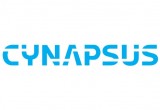Can Parkinson's Patients Experiencing Paralysis Symptoms Be Rescued?
Online, July 26, 2013 (Newswire.com) - The highest-profile symptoms of Parkinson's disease (PD) are well known: tremors, rigidity, slowness of movement, impaired balance and more. But for many PD patients, there is a lesser-known but just as important symptom that affects their wellbeing: "freezing" or "off" episodes that are marked by acute immobility.
In PD patients' brains, the cells that produce dopamine-a chemical that regulates movement-die. First-line therapy involves administering dopamine agonists that do the same job, but over the course of three to four years they work less and less well. Subsequent treatments may involve levodopa or enyzme inhibitors, but their effects may be limited and slow to take effect. When they are too slow in entering the bloodstream, the patient enters an "off" period-marked by immobility that can last from one hour to several hours in length.
Fortunately, there is a rescue therapy to treat these "off" periods when they occur: apomorphine, the only drug approved (under the name APOKYN® in the U.S. and Japan and APO-go® in Europe) to treat this symptom. Unfortunately, apomorphine is only available in an inconvenient and painful injectable form-problematic not only because it needs to be given several times a day, but because the injection can produce negative reactions including irritation and nodules at the injection site on the body.
Cynapsus Therapeutics, a small Toronto company, is trying a novel approach to overcome the limitations of the injectable form. Cynapsus has developed APL-130277, a dual-layer, sublingual thin-film strip, similar to Listerine® Breath Strips. Placed under the tongue, the strip dissolves in about 1.5 minutes, delivering the drug to the bloodstream in a similar time frame and concentration as the injectable dose.
If APL-130277 is cleared for use by the FDA, it holds the potential to open a new chapter in PD treatment, ensuring "off" episodes are rescued quickly, providing the patient the ability to move freely, thanks to a much more convenient and tolerable delivery method.
For more information, please visit www.cynapsus.ca.
